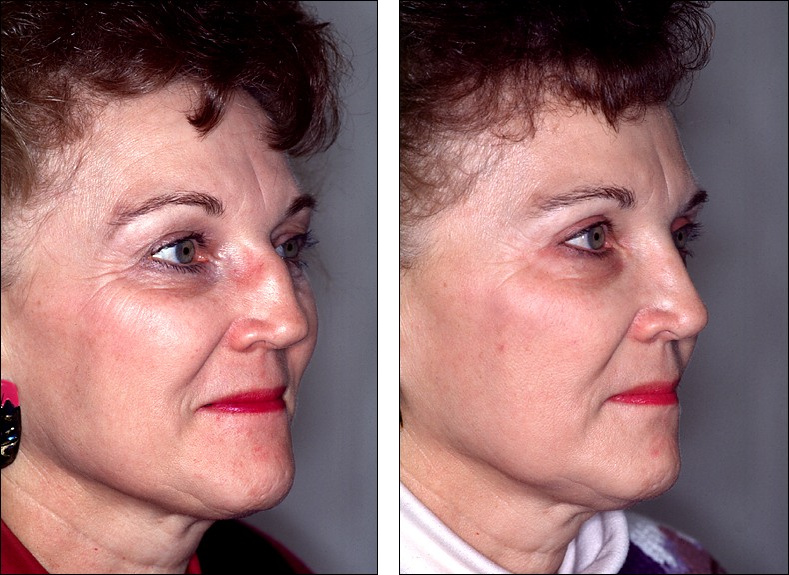|
 |
When a nose has a hump, the apex of the hump, the most prominent part, is
usually at the junction of where the upper, bony part of the nose meets the
lower, cartilaginous part of the nose.
If you grab the sides of your nose hard as you feel up and down the sides of
your nose, you'll be able to feel where the side walls are made of hard,
immovable bone and where they are made of soft, pliable cartilage.
|
|

next view of this patient
|


| All views of this rhinoplasty patient: |

 Go here to learn how to send your photos to Dr. Denenberg, Go here to learn how to send your photos to Dr. Denenberg,
 or to arrange a personal consultation. or to arrange a personal consultation.

Next: an example of the solid advice Dr. Denenberg gives patients on RealSelf.com.
Get that advice for your own situation by emailing your photos to Dr. Denenberg.
|
Questioner:
My plastic surgeon doesn't use drain tubes after Neck Lift/Facelift. Is that okay?
(Questioner submitted photos)
Dr. Denenberg's answer: Drains after facelift
Deb,
This is a question that cosmetic surgeons discuss regularly and you will find many different opinions. Most feel drains do help minimize seromas (fluid collections under the skin) and improve the recovery process. Some surgeons use fibrin sealants which also work well. Others just depend on dressings and pressure. In general, however, if your surgeon is experienced with facelifts and getting excellent results, then whether or not they use drains should not be an issue.
Best of luck with your procedure-
Link to this question on RealSelf.com
|


| 






